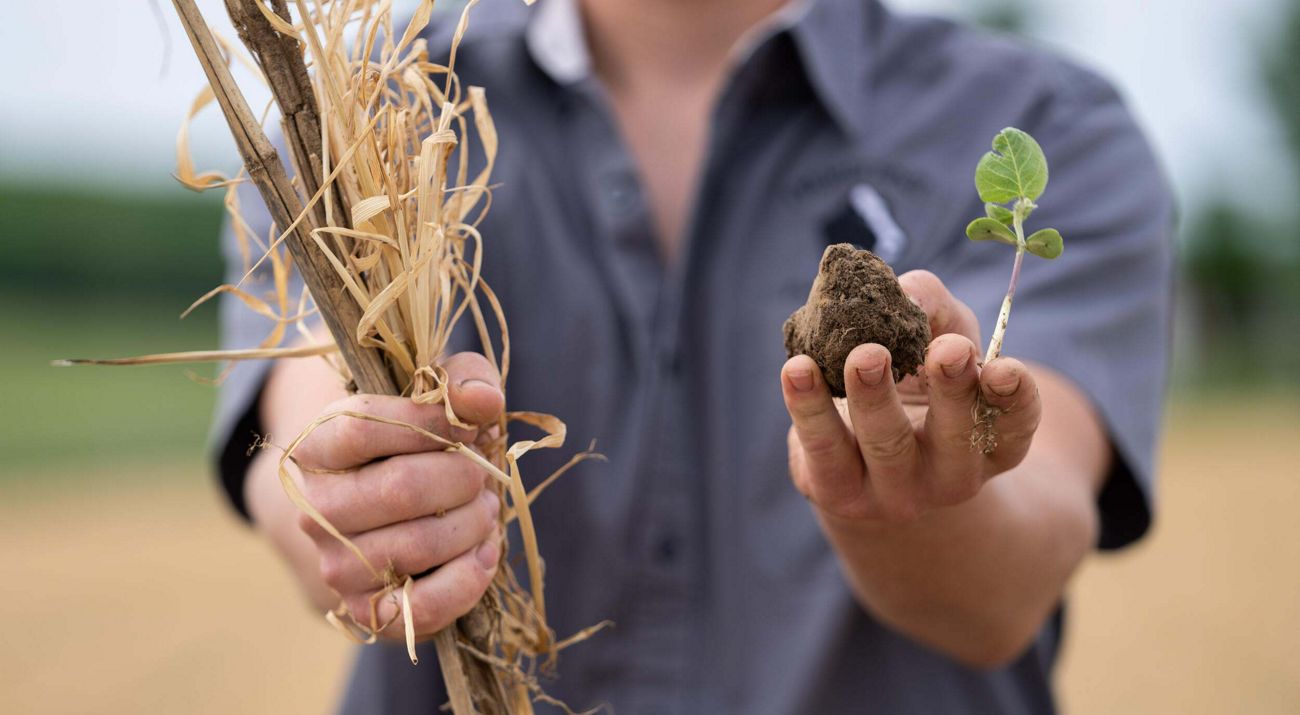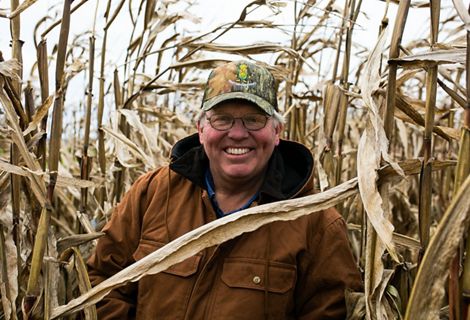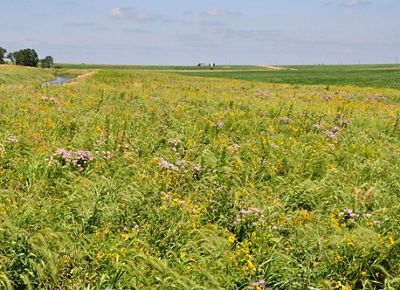Grazing as a Climate Solution
A new study explores how land stewardship and ranch management practices can help fight climate change.
Collaborating with farmers and ranchers to grow food in ways that nourish people and nature

Feeding a growing world while reducing the environmental impact of food production is one of humanity's greatest challenges today. Fortunately, solutions are within reach. Science tells us that shifting to a regenerative agriculture system can produce food in ways that work in harmony with nature, while delivering enduring benefits for people and the planet.
Food production has been on a steep and steady incline over the past century. Generations of farmers and ranchers have strived to keep up with rising demands, stewarding working lands with the best available resources and the latest advances in agriculture. Through the years, though, those advances have inadvertently come at a cost to people, climate and nature.
Today, agrifood systems, the processes involved in the production, processing, distribution and consumption of agricultural products, account for one-third of global greenhouse gas emissions. The agricultural activities within the “farm gate,” including related land uses and land use changes, contribute to about 17% of global GHG emissions. Additionally, the expansion of agricultural lands is a leading cause of habitat loss around the world and a significant threat to plant and animal diversity.
Producers are suffering, as well. Year after year, the men, women and families who operate the nearly 2 million farms and ranches in the United States endure increasingly intense weather events, rising operational costs, labor shortages, market volatility and significant debt, all of which threaten their livelihoods and our food supply. Unless we act now, this scenario is only going to worsen as food demand is expected to increase by 50% before the year 2050.
There is hope. Farmers and ranchers have significant opportunities to produce food and fiber in ways that restore nature, secure their livelihoods, and provide long-term benefits to society. They are among our greatest allies in conservation.
By embracing large-scale regeneration and restoration of the lands and waters that supply our food and support our farmers and ranchers, we can ensure a sustainable future for people and nature.
By 2030, the North America Agriculture Program aims to:
Avoid or sequester 57.3M metric tons of carbon emissions per year
Protect and improve 247M acres of healthy lands
Conserve 4M acres of oceans
Protect 12M acres of freshwater
We have years, not decades, to achieve these conservation targets. The Nature Conservancy believes that advancing regenerative agriculture solutions is among the essential pathways to reverse the interconnected crises of climate change and biodiversity loss. Learn more about TNC’s global 2030 goals.

Farmers share how they’re creating a legacy for their families, communities and nature
Regenerative agriculture practices can help deliver increased profits for producers and improve resiliency against climate, financial, and political shocks. But adoption of these practices isn’t happening fast enough nor reaching far enough to outpace the detrimental impacts of the current agriculture system. Experts attribute slow adoption rates to lack of information and technical guidance, financial risks, and adherence to conventional ways of production. We want to change that.
TNC is supporting farmers and ranchers in overcoming these barriers to regenerative practice adoption through a collaborative, multi-pronged strategic approach. Here’s how:
With the support of generous funders and collaborations with producers, businesses, academic institutions, agencies and other NGOs, we are working to implement these key strategies across U.S. working lands. Together, we are creating new pathways for adoption of farming and ranching practices that benefit producers and nature.

The Upper Mississippi River Foodscape project aims to shift millions of acres to regenerative systems.
TNC is committed to using the best available science to achieve better environmental outcomes from the agricultural lands that grow crops and support livestock and economic outcomes for farmers and ranchers.
Our team of scientists collaborate with other NGOs, universities and research institutions around the world to advance cutting-edge research and data-driven strategies in support of regenerative agriculture. Our commitment to science ensures that our projects are effective, scalable and impactful, paving the way for a healthier planet.
Explore below how our scientists are advancing the data and knowledge base to improve farming and ranching.
TNC has worked with farmers, ranchers and the larger agriculture industry throughout the United States for more than 40 years. In 2016, our scale of ambition in this area expanded immensely, giving us a new level of emphasis around the opportunity to impact our climate, water and biodiversity goals while helping farmers improve their productivity, livelihoods, and resiliency.
Our North America program focuses on two overarching strategies: Regenerative Crop Systems and Regenerative Grazing Lands. These areas of focus encompass a range of programs, projects, and partnerships touching down throughout the United States and beyond.
Conserving America’s Iconic Rangelands


Working towards sustainable dairy production.
A whole farm approach to conservation.

The North America Agriculture team is comprised of about 20 staff members and an extensive regional network of science, policy and agriculture experts across the United States, including state-based staff focused on local strategy implementation. Our team members are highly regarded in their fields, ranging from scientists who regularly publish in peer-reviewed journals, experts who hold leadership positions on the boards of other NGOs and industry initiatives, and professionals who are frequently sought after as keynote speakers and collaborators with industry initiatives. Our team also works closely with colleagues beyond North America to share lessons learned and strategies with TNC projects across the globe. Meet our team leads:
Get conservation stories, news and local opportunities from where you live.